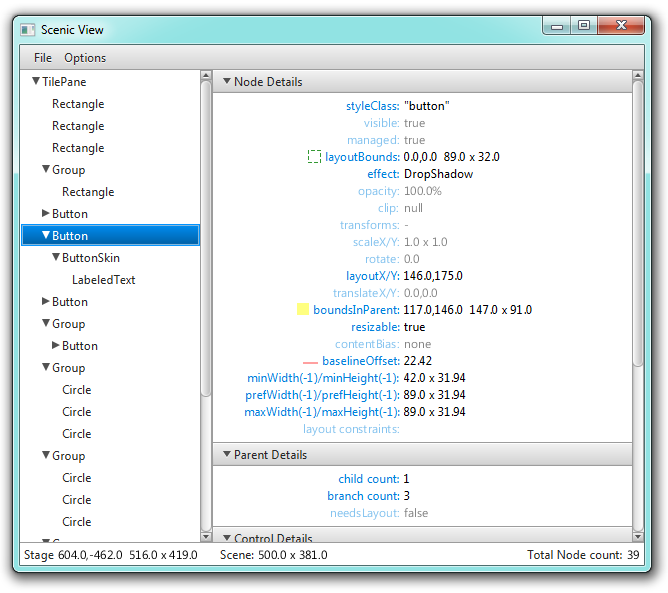
Introducing Scenic View
Update: More recent releases of Scenic View have been released since this post! Go to the Scenic View page to download the latest release!
Developing user interfaces is tricky, regardless of whether you’re just trying to understand the high level scenegraph layout, or whether you’re pushing pixels for a finely tuned user interface. I understand and feel for people in this situation. UI developers come up with all kinds of tricks, for example, temporarily introducing a bold one pixel border of varying colours around components to better understand the user interface. I certainly know I have done that countless times in the past when building user interfaces, and frankly, it is painful and massively time consuming.
Inside the JavaFX team, since times of yore (that is, since at least JavaFX 1.3, but perhaps earlier – my memory fails me here), we’ve had this remarkable little tool that was called Scenic View. It somehow just burst into existence, through the brilliance of Amy Fowler, whom many should know as the layout guru for both Swing and JavaFX. Scenic View is a tool that can be called to browse a live view of the application scenegraph. Here’s a screenshot:


